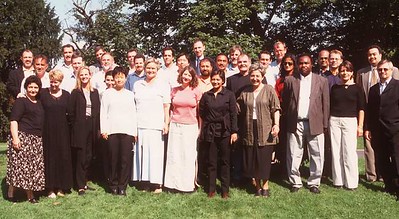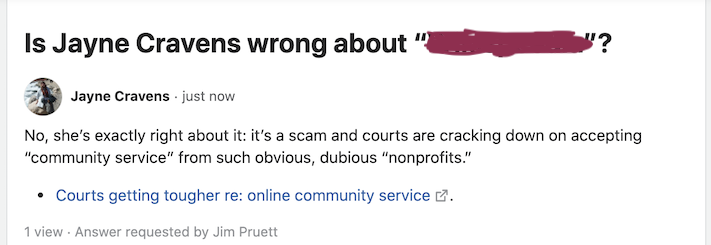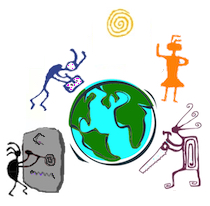
How did I miss this wonderful 2014 review by Thomas W. McKee of The Last Virtual Volunteering Guidebook: Fully Integrating Online Service into Volunteer Involvement, a book I co-wrote with Susan Ellis? Somehow I did – I just recently found it on the Amazon page for the book:
Since most books on technology are outdated by the time the ink dries on the printed version, I teased Susan Ellis about using the word “LAST” in the title of a book about virtual volunteering. She assured me, however, that the word “LAST” was carefully chosen for a very specific purpose. After reading the book, I now understand the wisely chosen word “LAST.” The authors do acknowledge that the technology tools we use today will change, but the principles outlined will always apply to future virtual volunteering because Guidebook is not just another book on technology. It is a book on the integration of technology into all aspects of volunteer engagement so that organizations avoid the silo compartmentalization of virtual vs. traditional volunteers.
Wow. This is exactly how Susan and I tried to write this book!
What we don’t mean is that there will or should never be a further need to write or talk about the latest developments in engaging volunteers online.
What we do mean is that, from this moment on, we hope that talk about virtual volunteering won’t be segregated to a separate book or separate chapter at the end of a book about volunteer management. Our dream is that this is a turning point regarding talk and training about volunteer engagement, and
- any book about volunteer management, whether it’s a book about basic principals in general, group volunteering, episodic volunteering, skills-based volunteering, teen volunteering, whatever, has advice about using the Internet to support and involve volunteers integrated throughout the material.
- any workshop about some aspect of volunteer management, whether it’s about the fundamentals of volunteer management, recruitment, risk management, adults working with children, whatever, fully integrates advice about using the Internet as a part of those activities.
In short, NO MORE SEGREGATION OF INTERNET-MEDIATED VOLUNTEERING in books about volunteer management, in workshops about volunteer management, and in references to volunteer engagement, as a whole. Virtual volunteering should not be an “add on” in any of these scenarios – not only in a book or training about volunteer engagement, but also, not in any volunteer engagement scheme at any organization. In fact, our dream is that we no longer hear about onsite volunteers as one group and online volunteers as another, separate group when talking about how to work with volunteers – how about we talk about volunteers, period? The exception: research. Absolutely, let’s have research on virtual volunteering, specifically – but NOT the motivation of online volunteers (enough!). Let’s have research that organizations actually need. What do they need? ASK THEM.

The Last Virtual Volunteering Guidebook: Fully Integrating Online Service Into Volunteer Involvement is available both as a traditional print book and as an e-book. Tools come and go, but certain community engagement/volunteer management principles never change. You will not find a more detailed guide anywhere for working with online volunteers and using the Internet to support and involve all volunteers – even after home quarantines are over and volunteers start coming back onsite to your workspace. Reviews assignment creation, changes you will need to make to policies and procedures, how to evaluate your program’s effectiveness, how to build a sense of team among online volunteers and so, so much more. And if you are a volunteer at a school or a concerned parent of a student at a school and you know that school might be considering online mentoring or online tutoring, I hope you will consider buying The Last Virtual Volunteering Guidebook and giving it to the volunteer coordinator at the school, who may not have the budget for such.
We published this six years before COVID-19 / the novel coronavirus, and never thought about how a global pandemic, social distancing and home quarantines would lead to a sudden, urgent rise in interest in virtual volunteering. I’m just glad the book is seeing such renewed interest (far more have been sold this year, in 2020, than even in the first year it was published).
Also see:
Why did we call it the LAST guidebook?









